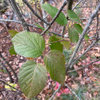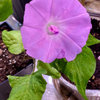Calystegia hederacea
beansnospam
13 years ago
Sponsored
More Discussions
Hello everyone,
I have just bought this very pretty new vine, and then thought I would just check for invasiveness. Turns out it is a member of the morning glory family, a sort of bindweed. I know that morning glory and bindweed are both invasive, but I've never seen this sort around and I find nothing much about it when I google. I live in a climate that can get down to -20C in winter, though it's usually more like -15C. Does anyone have any experience with this plant?
Thanks for answering



ron_convolvulaceae
ron_convolvulaceae
Related Professionals
West Milford Landscape Architects & Landscape Designers · Ballenger Creek Landscape Architects & Landscape Designers · Camas Landscape Architects & Landscape Designers · Hershey Landscape Architects & Landscape Designers · Belmont Landscape Contractors · Fort Worth Landscape Contractors · Fridley Landscape Contractors · La Mirada Landscape Contractors · Middle River Landscape Contractors · Middletown Landscape Contractors · Thonotosassa Landscape Contractors · Thornton Landscape Contractors · Waltham Landscape Contractors · York Landscape Contractors · Lauderdale Lakes Landscape ContractorsbeansnospamOriginal Author
ron_convolvulaceae
flora_uk
beansnospamOriginal Author
ron_convolvulaceae
flora_uk
ron_convolvulaceae